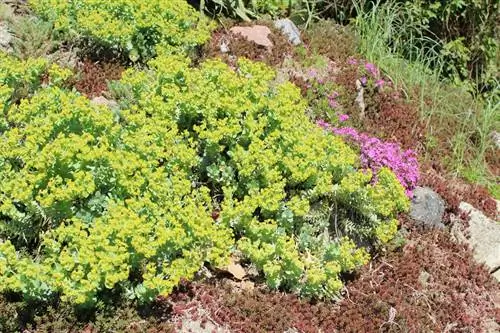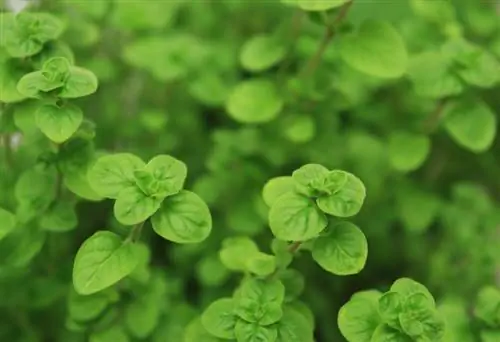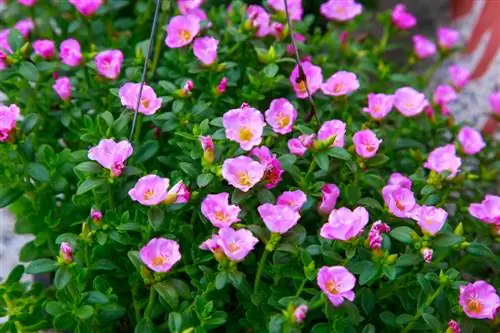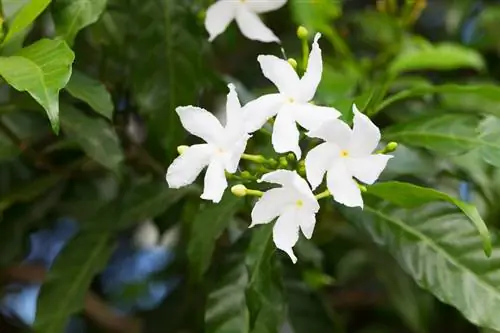- Author admin [email protected].
- Public 2023-12-16 16:46.
- Last modified 2025-01-23 11:20.
The sedum (Sedum), often known as “stonecrop”, is one of the thick-leaved plants. As such, it is able to store water in its thick, fleshy leaves and thus easily survive dry periods. The fat hen is also very easy to care for in other respects.
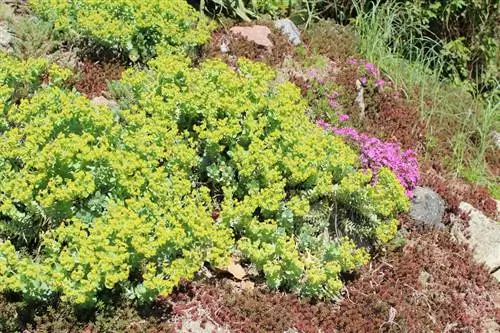
How do you properly care for a sedum?
Sedum care involves little watering, especially in dry periods, adding compost in autumn, cutting back in spring, controlling pests and, depending on the variety, overwintering or protecting it under cold house conditions.
Do you have to water sedums?
The sedum is particularly sensitive to waterlogging. You should therefore only water the plant during long dry periods, for example in very hot summers. Sedums in pots usually tolerate short-term drying out very well.
When and with what should you fertilize the fat hen?
For planted sedums, fertilization is not necessary; you should only provide the perennial with some compost in autumn. Specimens grown in pots are also rarely fertilized, but then with (a little!) succulent fertilizer (€5.00 on Amazon) or liquid complete fertilizer.
When and how can you cut sedum?
Sedums should only be cut back in early spring if possible. The above-ground shoots freeze off at the first frost and turn brown. Remove these dead shoots as much as possible. The plant sprouts again after pruning.
Which pests or signs of disease are particularly common in sedums?
Sedum is very robust and is rarely affected by diseases. Excessive moisture can be problematic and lead to root rot. When it comes to pests, the black weevil is often found, especially in planted specimens. The adults love the fleshy leaves of the sedum, while its larvae feast on the roots. As soon as you notice the first signs of feeding on the leaves, you should take action. Otherwise the plant will die quickly.
Are sedums hardy?
Many of the approximately 420 stonecrop species are hardy down to around -20 °C and can therefore overwinter in the garden without any problems. Special protection is usually not necessary for these sedums. Others, however, originally come from Mediterranean or subtropical regions and are therefore more sensitive.
How can you overwinter stonecrops?
Sedums that are not hardy or grown in pots overwinter best under cold house conditions, i.e. H. They are placed in a bright and frost-free but cool location in the house or greenhouse. The same applies to stonecrops cultivated indoors, which also require at least three months of winter break.
Tip
If your sedums don't seem to feel comfortable in one location, you can easily dig them up and replant them. The plants won't mind moving you.

